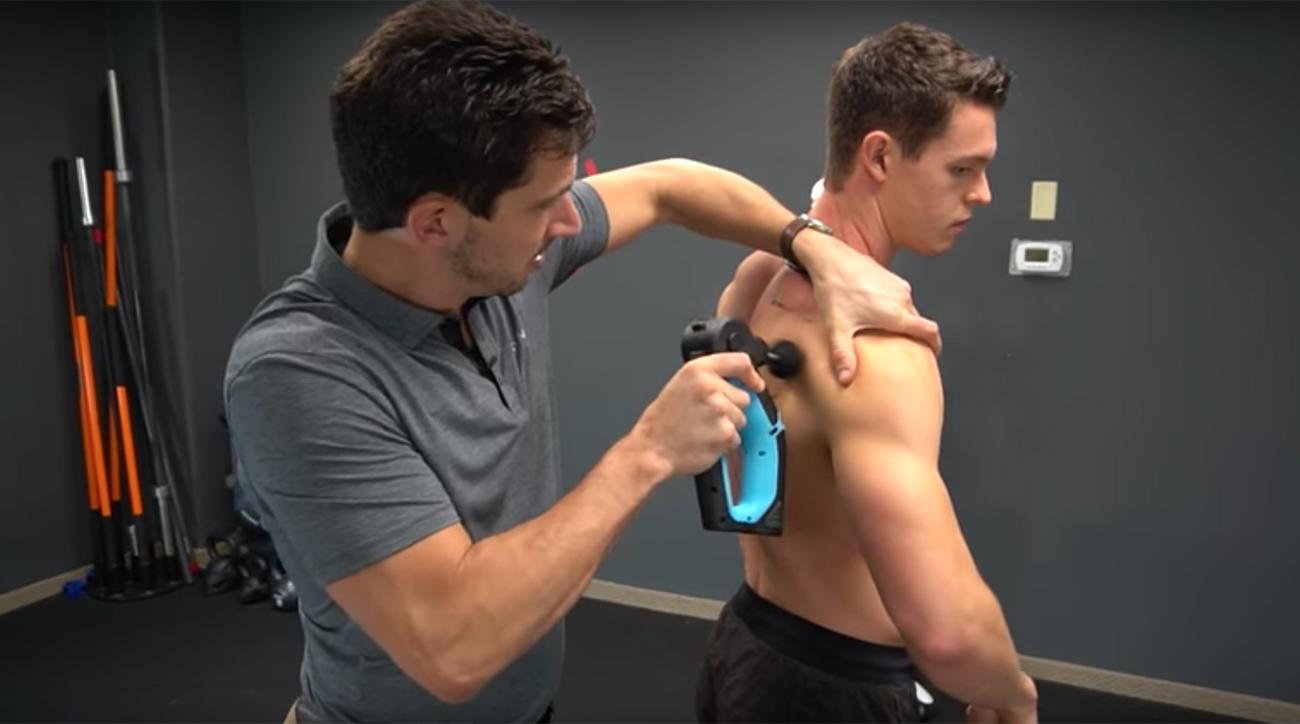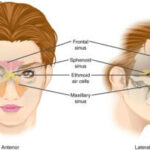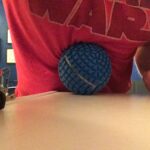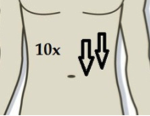The efficacy of self-massage tools is often a debated topic. There are studies that determine that self-massage alone does nothing to increase range of motion or athletic performance [5]. However, there are also contradictory studies, stating that self-massage has profound benefits for range of motion and athletic performance [3]. While more research may still be needed, it is usually recommended to self-massage in between massage sessions. If nothing else, this gives the athlete heightened awareness of muscle tightness and mobility restrictions.
Below is a list of common massage tools and their indications.
Foam Rollers
![[1]](https://images.squarespace-cdn.com/content/v1/568c1797df40f37b331c4d04/1562391567598-ZQ4C2QYLCLF3UEGZ1E3X/foam+roller.jpg)
Foam rollers are made of different materials with varying density and diameter. Foam rollers as we know them were invented in 1987 by Sean Gallagher, a physical therapist. For all intents and purposes, the roller itself is basically anything that is broad, somewhat rigid, and cylindrical. The shape is perfect for getting to larger areas of the body, such as the upper back and legs.
![[2]](https://images.squarespace-cdn.com/content/v1/568c1797df40f37b331c4d04/1562392000697-91NI7D1NDZD3NBEEBWH0/foam+roller+2.jpg)
Soft foam rollers, which are actually made of foam, are perfect for beginners. The lower density serves as a much less rigid surface with which to work. This makes the self-massage much less painful and will encourage you to practice your self-massage protocol more frequently.
For more pressure, a more rigid roller, such as a PVC roller, or a studded roller with dense foam, can be used.
Tips: Self-massage can be a bit uncomfortable, but should never be painful. Limit sessions to no more than a couple of minutes per area to avoid injuring muscles. It is strictly contra-indicated to roll on bones and joint capsules.
Rollers are great for a broad surface area; for smaller surfaces, or to reach even deeper muscles, use balls.
Balls
![[3]](https://images.squarespace-cdn.com/content/v1/568c1797df40f37b331c4d04/1562528453355-2DU4KO6NE1B4G1H6GMXF/balls.jpg)
Balls are also made from varying materials and diameters. The best part is that they can easily be found anywhere. Balls are best used for smaller, more precise areas of the body, such as the arms and lower legs. When using balls for self-massage, it is best to start with larger ones and gradually try smaller diameters as needed. Medicine balls work as a good starting point, as they are readily available in most gyms and have a large diameter with low density.
A lacrosse ball is usually a great size/density; tennis balls are also great for most smaller areas of the body. As with foam rollers, there are purpose built balls with studs that can be very effective too.
Handheld Tools
Handheld self-massage tools are varied and readily available. A couple of them are reviewed below.
![[4]](https://images.squarespace-cdn.com/content/v1/568c1797df40f37b331c4d04/1562528947372-V2COPSQ1WN8YFBOATCK8/massage+cane.jpg)
Massage canes generally have some sort of handle or grip, and a knob-like projection that can be used to apply sustained pressure to the upper back.
![[5]](https://images.squarespace-cdn.com/content/v1/568c1797df40f37b331c4d04/1562528992202-WIDAW4BG27QVETFYRXO0/massage+stick.jpg)
Massage sticks are usually best for large muscle groups in the legs, such as the Quadriceps or the calves.
Percussion Devices
![[6]](https://images.squarespace-cdn.com/content/v1/568c1797df40f37b331c4d04/1562612927745-FSZQYNPFNBPBA10VA2VC/theragun-youtube-screenshot-lead_0.jpg)
Percussion devices have been around for a long while however cheaper manufacturing and better technology have made them more affordable recently. Aside from the expected benefits of massage, some studies have shown that the vibration from those tools can be effective in reducing delayed onset muscle soreness [5]. These percussion massagers can be used for larger and smaller areas as different end pieces can be used to adapt to the area worked.
As always, please check with your physician if you are injured before trying self-massage. And reach out to your sports massage therapist for more advice on self-massage tools and techniques.
References (retrieved 7/8/19):
- Grabow, L. (2018). Higher Quadriceps Roller Massage Forces Do Not Amplify Range-of-Motion Increases nor Impair Strength and Jump Performance. Journal of Strength and Conditioning Research, 10.
- Lori Duncan DPT, M. C. (2016, 10 25). Foam Rolling: The Good, The Bad and The Ugly. Retrieved from Duncan Sports Therapy and Wellness: https://www.duncansportspt.com/2016/10/foam-rolling/
- Madoni, S. N. (2018). Effects of Foam Rolling on Range of Motion, Peak Torque, Muscle Activation, and the Hamstrings-to-Quadriceps Strength Ratios. Journal of Strength and Conditioning Research, 9.
- Manal Zein-Hammoud, P. (2015). Modeled Osteopathic Manipulative Treatments: A Review of Their in Vitro Effects on Fibroblast Tissue Preparations. Journal of the American Osteopathic Association, 12.
- Shagufta Imtiyaz, Z. V. (2014, 01 12). To Compare the Effect of Vibration Therapy and Massage in Prevention of Delayed Onset Muscle Soreness (DOMS). Retrieved from National Center for Biotechnology Information: https://www.ncbi.nlm.nih.gov/pmc/articles/PMC3939523/
- Smith, J. C. (2018). Acute Effect of Foam Rolling and Dynamic Stretching on Flexibility and Jump Height. Journal of Strength and Conditioning Research, 6.
Image references (retrieved 7/8/19):
- https://www.lifelinefitness.com/foam-roller.html
- https://www.walmart.ca/en/ip/iron-body-fitness-acupoint-foam-roller/6000191124527
- http://ibegrit.com/product/begrit-4pcs-massage-ball-roller-set-lacrosse-and-spiky-ball-combo-pack-massage-balls-perfect-for-trigger-point-and-foot-massaging/
- https://www.amazon.com/Sivan-Health-Fitness-Pressure-Massage/dp/B00KWWRNTC
- https://www.amazon.com/Physical-Therapy-Original-Massage-Stick/dp/B07NRVY92S
- https://www.si.com/edge/2018/01/22/percussive-massage-therapy-theragun-recovery
This article/video is for educational purposes only; do not attempt without your physician’s clearance. If you are in pain or injured, see your physician.
Copyright © Vidal Sports LLC 2019







